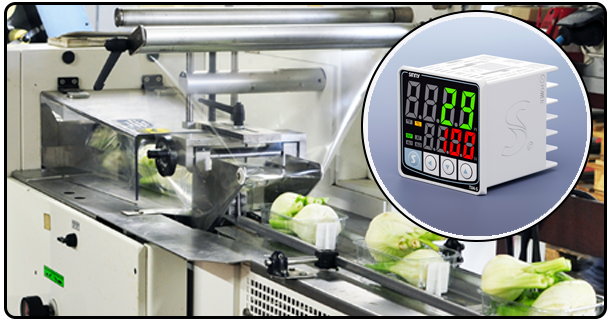How PID Temperature Controllers Reduce Waste and Save Costs
Explore the economic and environmental advantages of PID temperature controllers. Discover how precise temperature regulation can lead to reduced waste, lower energy bills and sustainable operations while our guide offers insights for optimizing processes.
1. Introduction
Definition of PID Temperature Controllers PID (Proportional, Integral and Derivative) temperature controllers are sophisticated devices used in multiple industries to maintain accurate temperatures by employing an error calculation mechanism within their control loop feedback mechanism that measures deviation between desired setpoint and process variable readings.
Overview of Temperature Control Impact
Temperature Control Impact Its Proper temperature management can make an enormous difference to both waste reduction and cost savings. PID controllers help optimize precise temperatures to minimize energy use and material wastage resulting in significant cost cuts as well as improved process efficiencies.
2. The Principle of PID Control
PID Control Explanation of PID Algorithm The PID algorithm comprises three essential elements. These components include:
Proportional (P): This component outputs an output proportional to its error value and adjusts process control variables proportionally as temperature differs from setpoint.
Integral (I): This component assesses errors over time, compensating for any accumulated offsets that cause system deviation from its setpoint.
Derivative (D): This component forecasts future errors based on their rate of change and helps dampen system response by minimizing overshoot and improving stability.
Optimization of Temperature Regulation
PID controllers maximize temperature regulation by continuously adjusting their control variable to reduce error, thus eliminating temperature fluctuations that cause waste or inefficiencies - guaranteeing optimal operational parameters of any process they serve.
3. Cost Savings through Precision
Cost Savings through Precision
PID controllers offer many distinct advantages when it comes to energy consumption reduction. By maintaining constant temperatures, these controllers prevent energy spikes caused by frequent heating/cooling cycles resulting in more effective use and reduced utility bills.
Case Studies Demonstrating Cost Savings
HVAC Systems: One commercial building installed PID controllers into its HVAC system to achieve precise temperature regulation that resulted in 15% decreased energy costs as constant heating/cooling adjustments were eliminated.
Plastic Molding: A plastic manufacturing company implemented PID controllers to regulate the temperature of molding machines. This resulted in a 10% decrease in material waste and a 20% reduction in energy consumption, leading to substantial cost savings.
4. Waste Reduction Strategies
Precise Temperature Control and Material Waste Reduction
Accurate temperature regulation is of critical importance in manufacturing processes where temperature variations could result in defects and material waste. PID controllers ensure the temperature remains within its specified range to decrease the chance of defective products being made.
Examples of Waste Reduction
Chemical Processing: At one chemical plant, PID controllers successfully maintained precise reaction temperatures to decrease raw material waste by 8 percent while increasing product yields and improving their product yields.
Food Production: A food processing company used PID controllers to regulate cooking temperatures. This led to a 12% reduction in food waste due to overcooking or undercooking, enhancing product quality and consistency.
5. Adanced PID Features
Introduction to Advanced Features
Modern PID controllers feature advanced features like auto-tuning and fault detection to achieve optimal performance, with auto-tuning automatically adjusting PID parameters to achieve this aim, and fault detection recognizing potential issues before they cause system malfunctions.
Benefits of Advanced Features
Advanced features increase efficiency and lower operational costs, such as auto-tuning of PID controllers to ensure peak energy use efficiency and process stability; fault detection allows proactive maintenance that reduces downtime while also preventing costly repairs.
6. Implementation and Best Practices
Guidelines for Implementing PID Controllers
Generally speaking, installing PID controllers into existing systems requires taking an organized approach, with key guidelines including:
System Evaluation: Evaluate your current system to ascertain compatibility and identify areas for enhancement, then prepare an installation plan including timelines, resources, and potential challenges.
Conduct Testing and Calibration to Guarantee Proper Operation: Carefully test and calibrate each controller in your system to make certain it has been set up as intended and that its functions are as intended.
Best Maintenance Practices
PID controller maintenance is essential to ongoing cost savings and waste reduction, and here are the recommended practices:
Regular Inspections and Calibration are necessary in order to detect signs of wear or malfunction and ensure accurate temperature regulation. Calibrate controllers on an ongoing basis to maintain accurate temperature management.
Provide comprehensive training to operators to ensure they understand how to utilize and maintain controllers effectively.
7. Economic and Environmental Effects
Broader Benefits of PID Controllers
PID controllers bring not only cost savings, but also wider economic and environmental advantages. By cutting energy usage and material waste production, these controllers contribute towards more environmentally responsible practices and reduced operational expenses - benefits which go far beyond individual cost reduction alone.
PID Controllers Contribute to Sustainable Business Practices
PID controllers play an essential part in helping businesses adopt sustainable practices. Their ability to achieve precise temperature regulation reduces environmental impact from industrial processes, aligning with global efforts to lower carbon footprints and promote sustainability.
8. Conclusion
PID temperature controllers offer great benefits in terms of waste reduction and cost savings, minimizing energy use as well as material wastage to produce significant financial benefits and enhanced process efficiencies. Their precise temperature regulation helps save costs through reduced energy and material waste production resulting in significant financial benefits while simultaneously improving process efficiencies.
Adopting PID Technology
PID controllers play an essential role in future-proofing industries against rising costs and stringent environmental regulations, while at the same time contributing towards sustainable yet cost-efficient industrial operations. As technology develops further they remain essential in maintaining sustainable yet cost-efficient industrial operations.
- Implementing PID Temperature Control in Existing Systems
- PID Temperature Controllers: Essential Features and Specifications























